Last week a business owner inquired if I could help his company build a roadmap to a high trust culture. First I asked what he thought the roadmap might include, and his answer was not surprising. “My business coach instructed my office manager to hire a motivational speaker, enter us in a “great workplace” competition, donate money to charity, and have an annual picnic. Then we can call ourselves trustworthy.” ( I didn’t dare ask for the name of the coach, as it was immediately apparent that trust subject matter expertise was not their forte.) My next question was a bit more difficult. I asked him what role he would play in designing the trust roadmap. His response, “That’s why I hired a coach, so I would know how and what to delegate to my staff.” Suffice it to say, it’s a good thing the conversation was occurring by phone so I could end the call quickly.
With unemployment at record lows and employee engagement and retention looking very bleak, one might think that leaders would pay closer attention to building a culture of trust, which some have gone as far as calling the “new currency,” but apparently not so. In fact, over the past ten+ years, I’ve lost count of the number of times I’ve heard similar (and sometimes worse) answers to the questions posed above.
So once again I turned to the members of our Trust Council and asked them for what they considered to be the first three steps in building a culture of trust.
- Inform them of this effort.
- Ask for their help in supporting it.
- Ask for their help in finding resources (written, video, or in-person) to support it.
- Ask their help in creating periodic measures for all of them for how to observe progress.
3. Commit to keep trust-building as a top professional priority in the future.
Bob Whipple of Leadergrow approached the question from the perspective of what a small business owner might do:
Have a staff meeting and tell your team there are some new rules for the enterprise:
- We will admit our mistakes, and model that behavior by admitting a mistake you have made during the last week that you have not shared yet.
- Ask that every time a person receives help or some special effort from someone else on the team – that person writes a thank you email to the person and copies you on it. You then read a selected few of those notes at the start of every meeting. Build a culture of reinforcement at all levels of the organization.
- Insist that when you say or do something that someone in the organization believes is not right or consistent with our values, that person is obligated to tell you what the concern is and promise that you will make that person glad he or she brought it up. Then do exactly that without fail – ever. Practice reinforcing candor!
My approach to constructing a high trust culture, encompasses some of the suggestions made by “the Bobs” above, and will work in any organization of any size.
- Establish an organizational trust-building committee comprised of a Board member if applicable, a member of the executive team, one senior employee from the compliance, finance, communications and HR functions. Set a one-year goal to build a culture of trust from the inside out, at the team level, including the Board and executive team.
- Since trust is an outcome of many universal principles, step two is for each team to determine which principles are weak, and which are strong. As our past surveys have shown, the results won’t necessarily be the same from team to team within the organization. (If the organization is relatively small, it may not be necessary to survey each team individually.)
- Spend the first six months addressing the weakest principles on each team and celebrating the strengths. Repeat survey in 6 months and continue working on the principles that remain weak. By the end of one year, the hardest part of the trust “construction project” will have been completed. Now go have that ice cream social!
Building a culture of trust will only be effective when:
- Leaders acknowledge that culture change starts with them, and is always built from the inside out
- The right tools are used to identify trust weaknesses and strengths
- Team members are free to discuss survey or other diagnostic outcomes through open dialogue
- Trust weaknesses are mended and strengths are celebrated
We call this process AIM Towards Trust... Acknowledge, Identify, Mend and it’s been used successfully in teams and organizations of all sizes, shapes and colors; but only when leaders intentionally choose to build trust into their corporate culture AND own it. That must always occur BEFORE a crisis, not after the fact.
Finally don’t get caught up in “work arounds” to building a high trust culture because there ARE no quick fixes. These are a few of the more “trendy” ones that you might have encountered:
- Misdefined trust: This includes brand trust, data trust, blockchain trust, and check-the-box trust. Trust is always internal and interpersonal.
- External trust polls: If the question “trust to do what?” is not answered, the survey is either invalid or misleading.
- Trust as a popular place holder title: Many will use trust interchangeably with other terms like transparency, ethics or integrity, when it is actually a combination of many universal principles.
- Trust as one-size-fits-all: Because of its complexity, all organizational trust challenges can be attributed to a variety of factors that must be identified and addressed separately and differently.
- Trust that is not “principles” based: Trust is not a function of the PR department or a “purpose” campaign, but rather a function of highly principled trustworthy leadership.
I hope these suggestions will help you in constructing your own trust roadmap. Special thanks to Bob V. and Bob W. Your contributions to elevating trust are always appreciated.
Barbara Brooks Kimmel is the Founder of Trust Across America-Trust Around the World whose mission is to help organizations build trust. For more information on how to build authentic trust, contact her at barbara@trustacrossamerica.com
Copyright 2019, Next Decade, Inc.

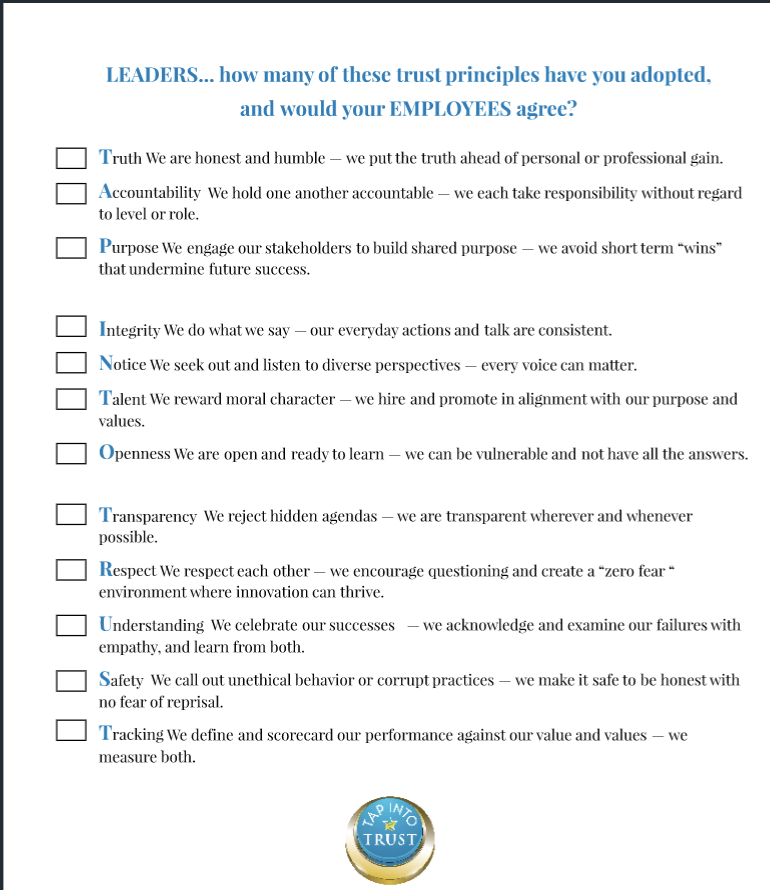
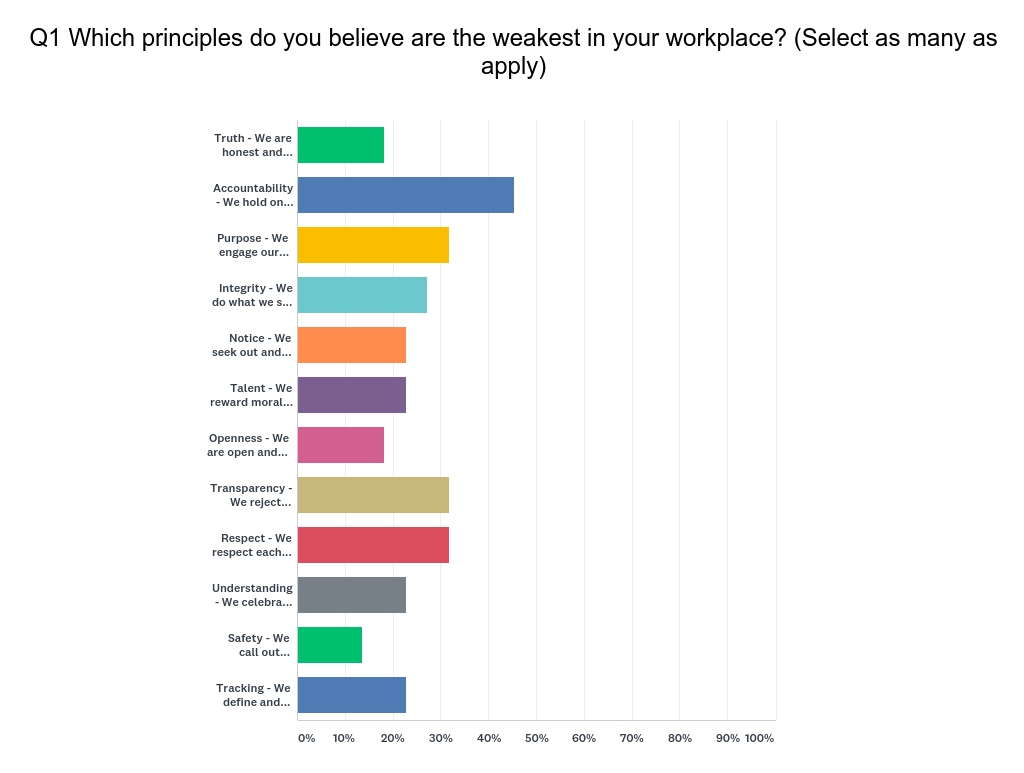
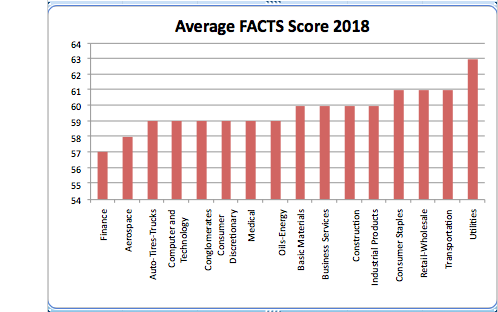
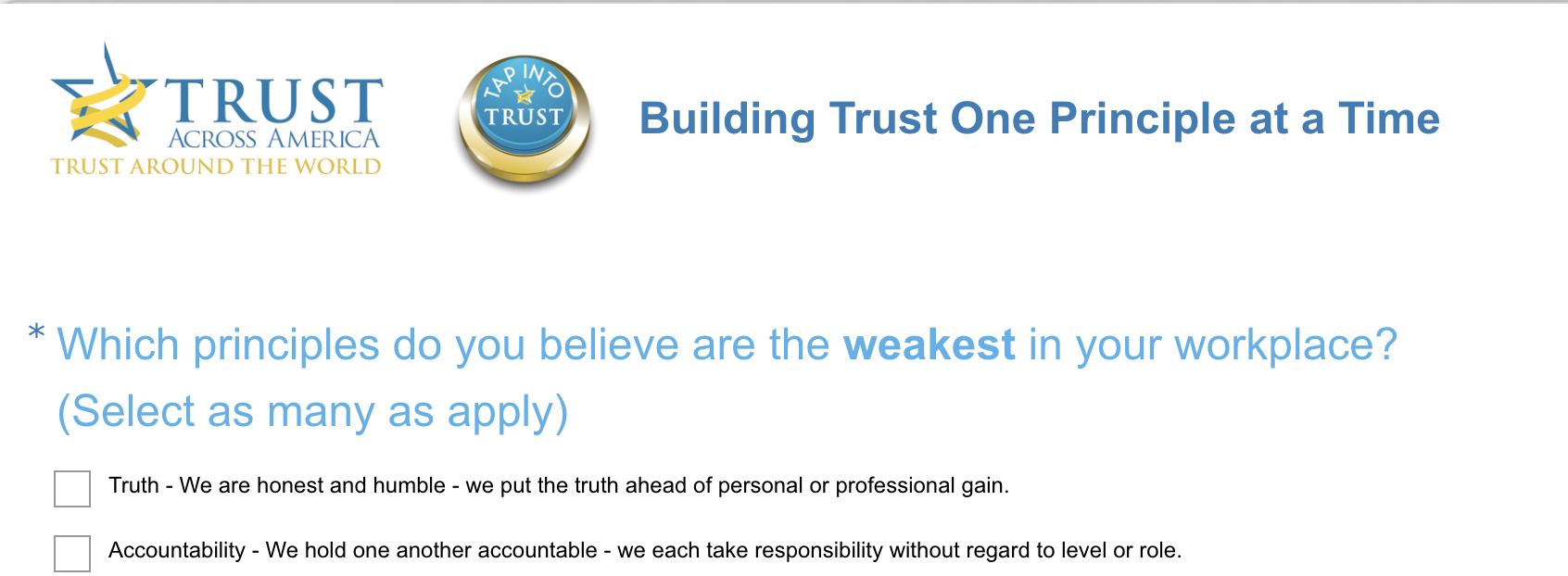
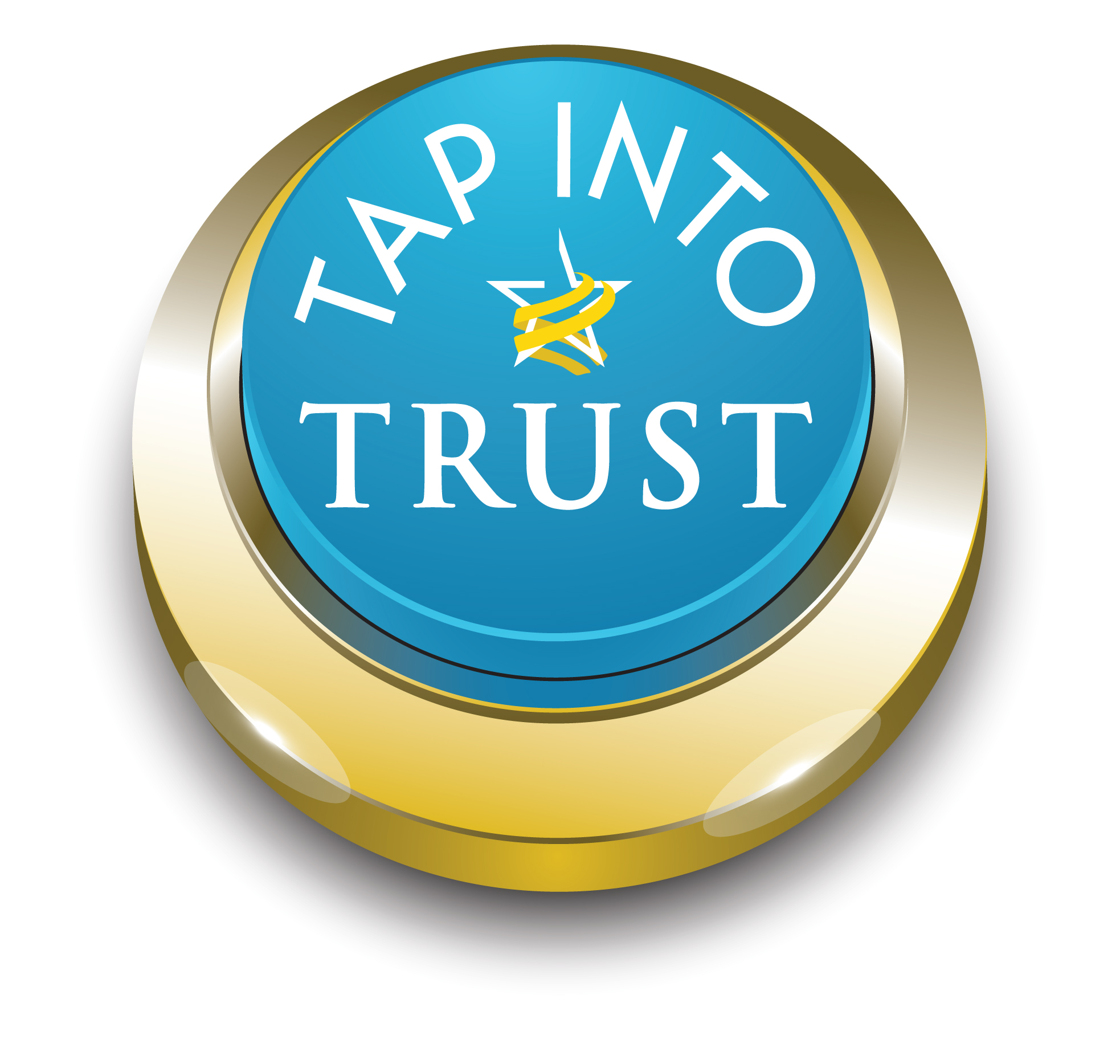
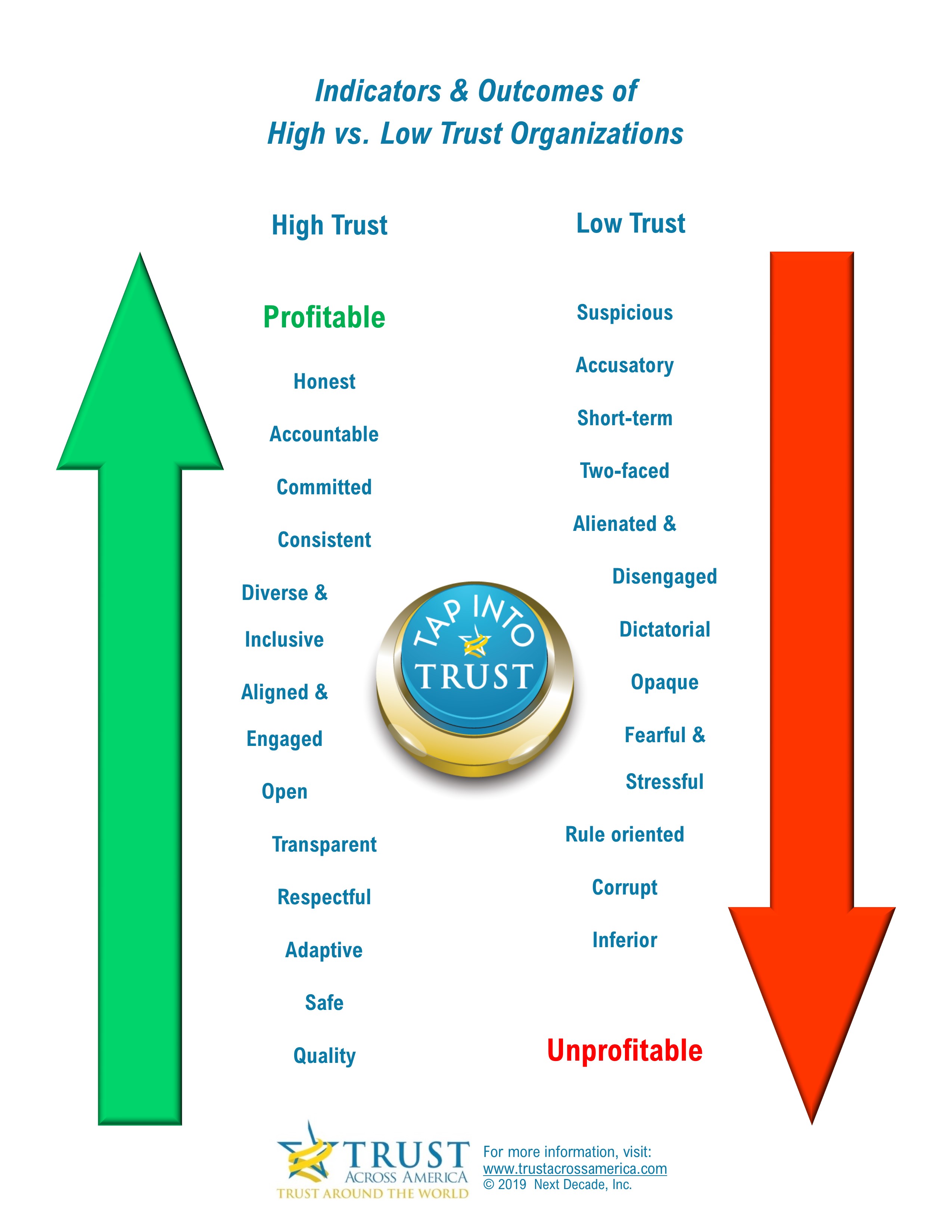
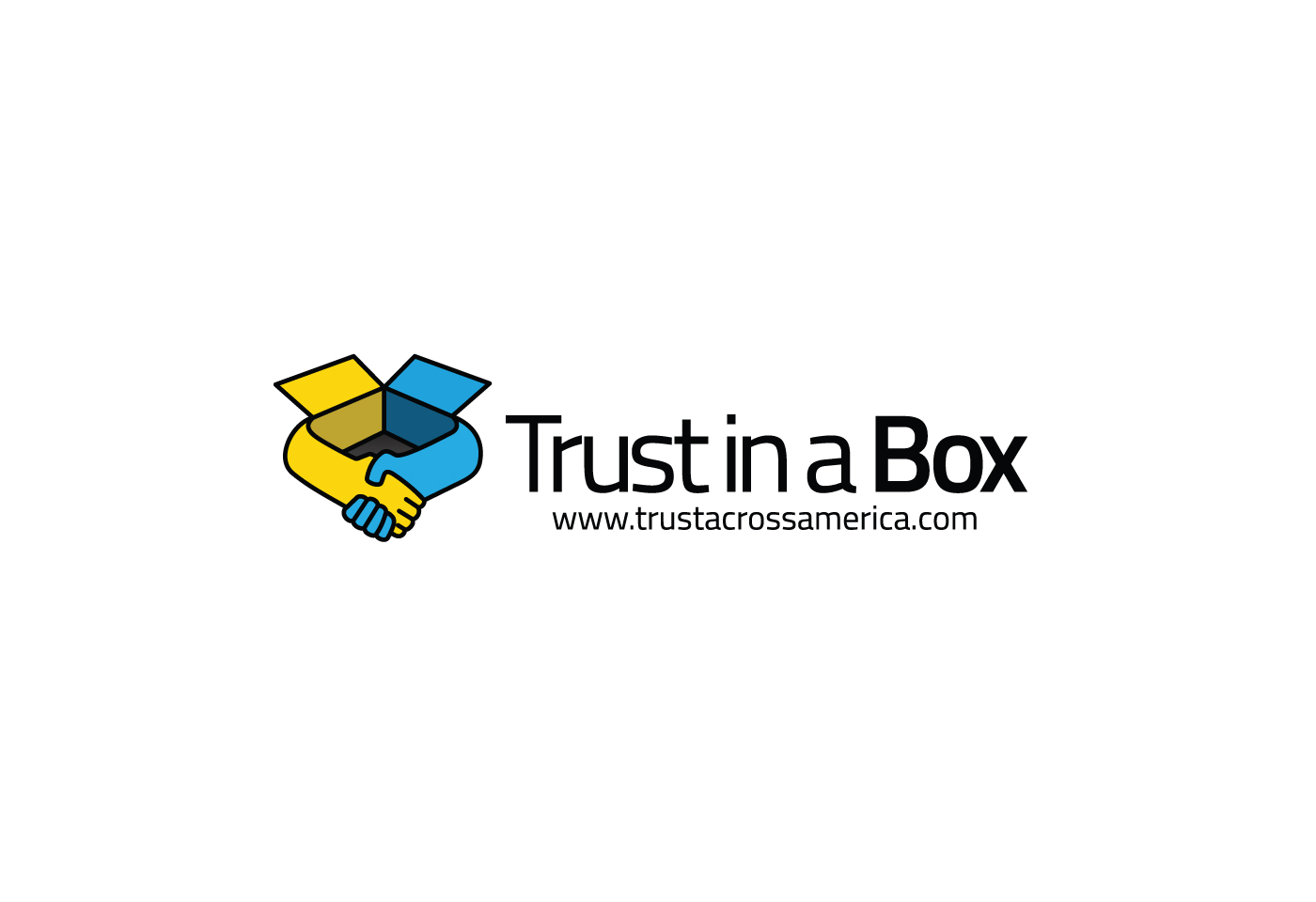
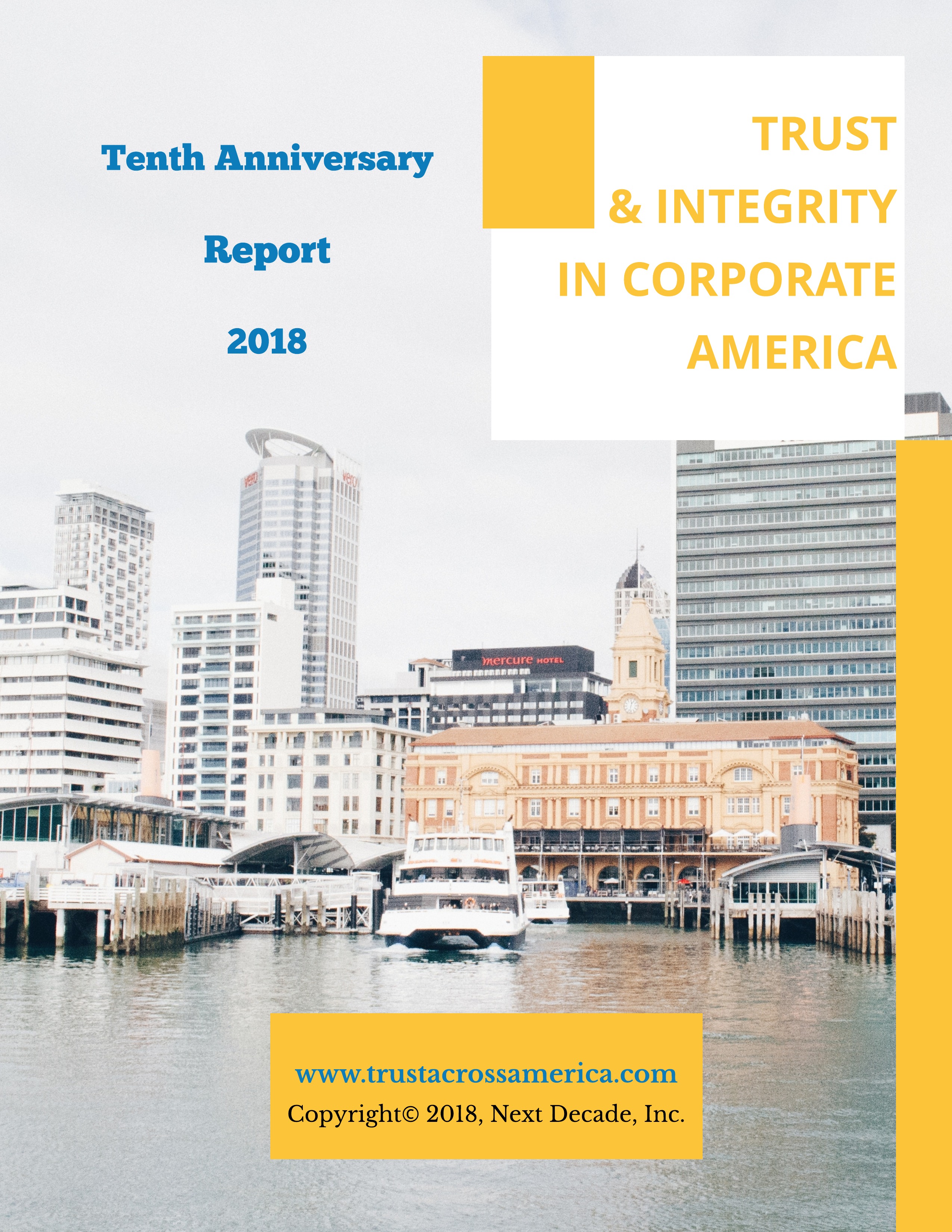
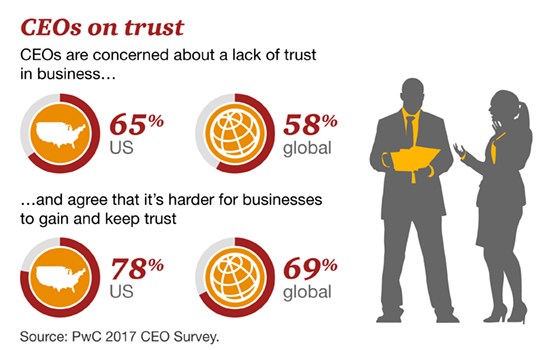

Recent Comments